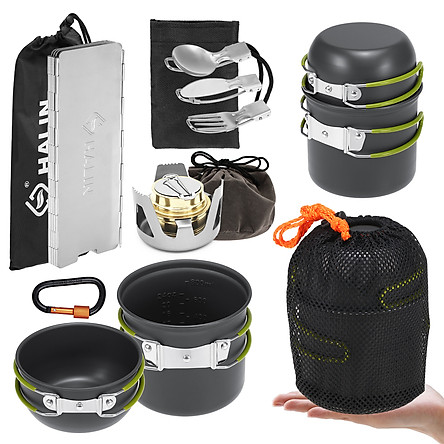brightwomen.net guatemalanska-kvinnor genomsnittspris för postorderbrud
Area 4: Studies the Avoid Extraction Model
Faraway Oversight Brand you mays Characteristics
And additionally using industrial facilities one to encode pattern complimentary heuristics, we can along with create tags features that distantly track research items. Here, we will stream during the a listing of known spouse pairs and check to find out if the two out-of individuals during the a candidate matches one among these.
DBpedia: All of our database out of identified spouses originates from DBpedia, that’s a residential district-motivated investment exactly like Wikipedia but for curating planned study. We’ll play with a good preprocessed snapshot because the training feet for everyone tags means advancement.
We could look at a number of the analogy records regarding DBPedia and make use of them inside the a straightforward faraway supervision brands form.
with open("data/dbpedia.pkl", "rb") as f: known_partners = pickle.load(f) list(known_spouses)[0:5] [('Evelyn Keyes', 'John Huston'), ('George Osmond', 'Olive Osmond'), ('Moira Shearer', 'Sir Ludovic Kennedy'), ('Ava Moore', 'Matthew McNamara'), ('Claire Baker', 'Richard Baker')] labeling_mode(tips=dict(known_partners=known_spouses), pre=[get_person_text message]) def lf_distant_oversight(x, known_partners): p1, p2 = x.person_labels if (p1, p2) in known_spouses or (p2, p1) in known_partners: get back Positive more: return Abstain from preprocessors transfer last_identity # History identity pairs for identified partners last_labels = set( [ (last_term(x), last_title(y)) for x, y in known_spouses if last_term(x) and last_name(y) ] ) labeling_setting(resources=dict(last_brands=last_labels), pre=[get_person_last_labels]) def lf_distant_supervision_last_labels(x, last_names): p1_ln, p2_ln = x.person_lastnames return ( Positive if (p1_ln != p2_ln) and ((p1_ln, p2_ln) in last_brands or (p2_ln, p1_ln) in last_labels) else Refrain ) Implement Brands Qualities into Data
from snorkel.brands import PandasLFApplier lfs = [ lf_husband_wife, lf_husband_wife_left_windows, lf_same_last_identity, lf_ilial_dating, lf_family_left_windows, lf_other_dating, lf_distant_supervision, lf_distant_supervision_last_names, ] applier = PandasLFApplier(lfs) from snorkel.tags import LFAnalysis L_dev = applier.implement(df_dev) L_instruct = applier.apply(df_train) LFAnalysis(L_dev, lfs).lf_realization(Y_dev) Training the newest Name Model
Today, we’ll instruct a design of the newest LFs in order to imagine its weights and you will merge the outputs. Because model was coached, we can blend the brand new outputs of the LFs towards just one, noise-aware training identity in for all of our extractor.
from snorkel.labels.design import LabelModel label_design = LabelModel(cardinality=2, verbose=True) label_model.fit(L_train, Y_dev, n_epochs=5000, log_freq=500, seed=12345) Label Model Metrics
Given that all of our dataset is highly unbalanced (91% of your own names try bad), even a minor baseline that always outputs negative get a beneficial high reliability. Therefore we evaluate the identity model by using the F1 get and you can artikel källa ROC-AUC in lieu of precision.
from snorkel.investigation import metric_score from snorkel.utils import probs_to_preds probs_dev = label_design.expect_proba(L_dev) preds_dev = probs_to_preds(probs_dev) printing( f"Title model f1 get: metric_rating(Y_dev, preds_dev, probs=probs_dev, metric='f1')>" ) print( f"Label model roc-auc: metric_rating(Y_dev, preds_dev, probs=probs_dev, metric='roc_auc')>" ) Identity design f1 score: 0.42332613390928725 Term design roc-auc: 0.7430309845579229 Within final area of the course, we’ll play with the loud studies brands to apply all of our end servers reading design. I start with filtering out knowledge research items and this don’t recieve a tag out-of one LF, because these data products contain zero signal.
from snorkel.brands import filter_unlabeled_dataframe probs_instruct = label_model.predict_proba(L_illustrate) df_show_filtered, probs_instruct_blocked = filter_unlabeled_dataframe( X=df_train, y=probs_train, L=L_show ) 2nd, i illustrate a straightforward LSTM network having classifying candidates. tf_design include attributes to have control provides and building the new keras design to possess degree and you can comparison.
from tf_model import get_design, get_feature_arrays from utils import get_n_epochs X_instruct = get_feature_arrays(df_train_blocked) model = get_model() batch_size = 64 model.fit(X_illustrate, probs_train_filtered, batch_proportions=batch_size, epochs=get_n_epochs()) X_decide to try = get_feature_arrays(df_attempt) probs_take to = model.predict(X_take to) preds_shot = probs_to_preds(probs_test) print( f"Shot F1 whenever given it smooth labels: metric_get(Y_test, preds=preds_sample, metric='f1')>" ) print( f"Take to ROC-AUC whenever trained with smooth labels: metric_rating(Y_decide to try, probs=probs_try, metric='roc_auc')>" ) Decide to try F1 when given it softer names: 0.46715328467153283 Attempt ROC-AUC when given it flaccid labels: 0.7510465661913859 Summation
Within this class, i shown exactly how Snorkel are used for Recommendations Extraction. We shown how to make LFs that control statement and you can exterior knowledge angles (faraway oversight). Eventually, we presented just how a product educated with the probabilistic outputs out of the fresh new Identity Model can perform comparable show if you’re generalizing to any or all analysis factors.
# Look for `other` matchmaking terms between person mentions other = "boyfriend", "girlfriend", "boss", "employee", "secretary", "co-worker"> labeling_means(resources=dict(other=other)) def lf_other_relationships(x, other): return Negative if len(other.intersection(set(x.between_tokens))) > 0 else Abstain 



